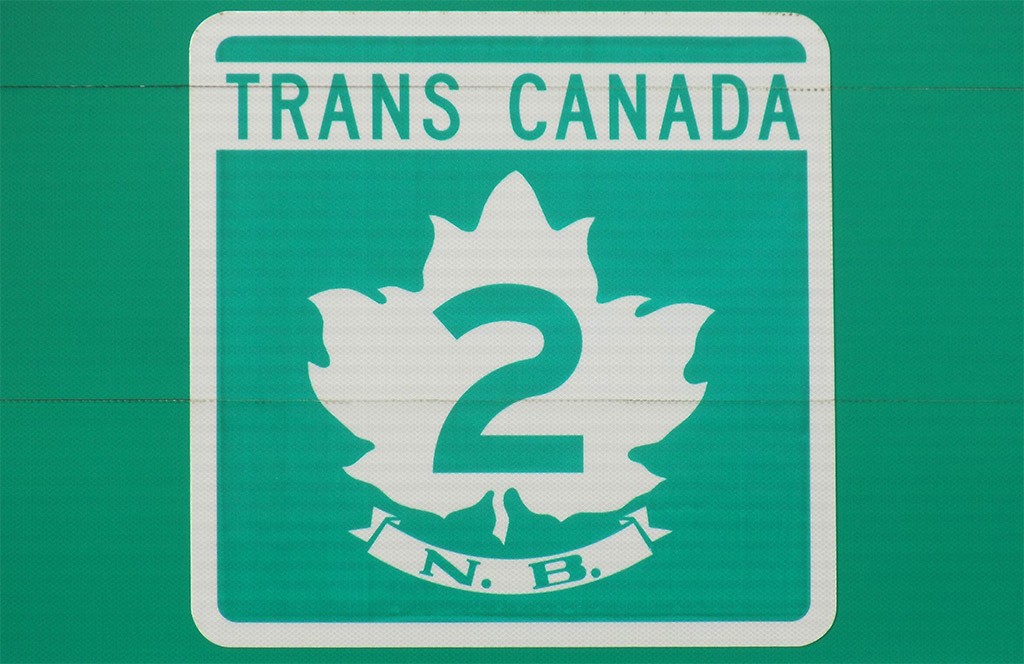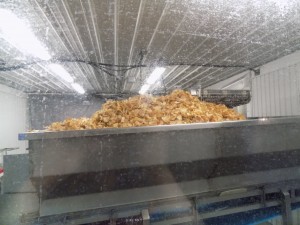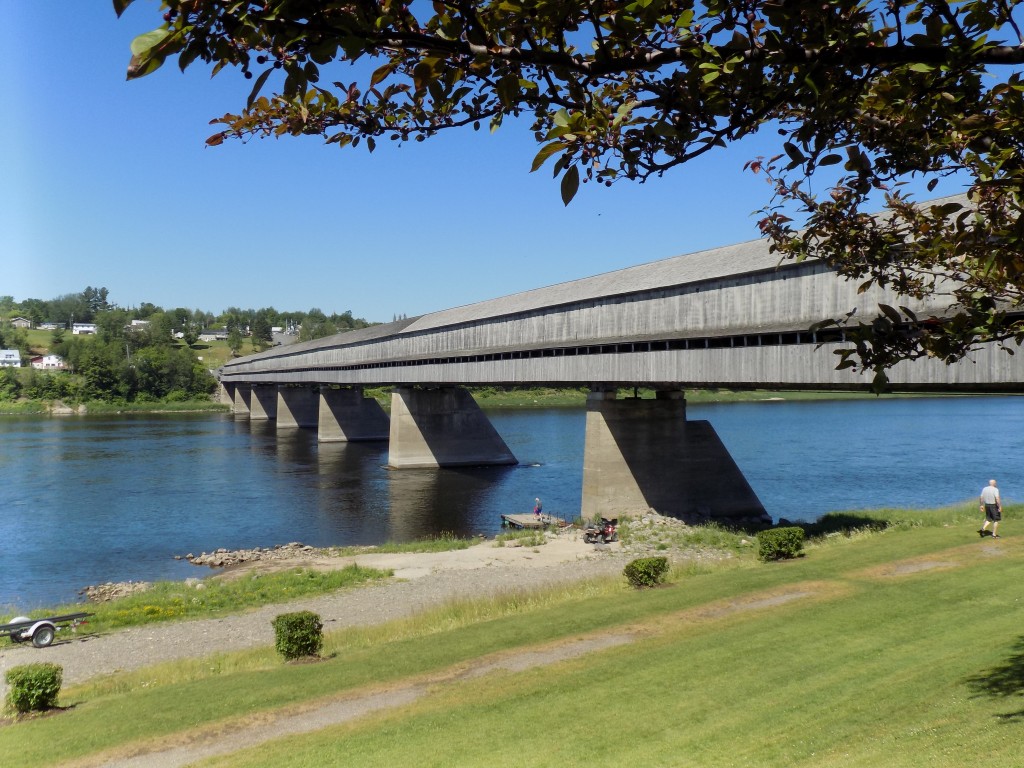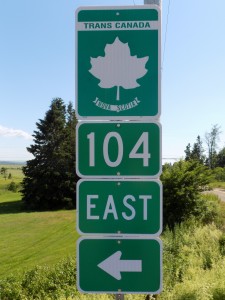On the Road: The Trans-Canada Highway east to the Atlantic
Canada Day 2016—our 149th anniversary of Confederation, found me on the road, more specifically, the Trans-Canada Highway, in two provinces, New Brunswick and Nova Scotia.
The day began in fog-covered Edmundston, New Brunswick, on the St. John River, just across the border from Madawaska, Maine. The Trans-Canada enters New Brunswick from Quebec a few miles from Edmundston. Our miniature convoy of two pickup trucks and an SUV headed south through heavily-forested New Brunswick. Occasionally the sweeping vistas of the St. John Valley came into sight and the forests gave way to rolling acres of potatoes.
We stopped at the Covered Bridge Potato Chip factory and outlet store, located literally at the end of an off ramp near the village of Hartland. Potato chips were once a big product in western New Brunswick. McCain’s actually started out in chips before focusing on fries. Hatfield’s was another big brand too.
Covered Bridge started in 2006 when Ryan Albright and his brother Matt took over the family potato farm. Ryan decided to start making kettle-cooked potato chips from Russet potatoes in 2009 and was selling them out of his car. The company now has 100 employees and two big warehouses in Hartland along with the factory and store by the Trans-Canada Highway. Ryan Albright is also a potato broker, an integral part of the spud marketing business.

Four year-old Annabelle and six year-old Jimmy (with his friend Lemur) on vacation from Ontario enjoy fresh, warm potato chips. Photo by James Morgan
Covered Bridge chips are now sold across Canada and around the world. They come in usual potato chip flavors like barbecue, salt and vinegar, and sour cream and onion, but also unique Covered Bridge varieties. These include Atlantic Lobster and a limited batch of Loaded Hot Dog flavor. There are the uniquely Canadian flavors like Ketchup and Montreal Steak Spice too. Visitors to the factory can pay for a self-guided tour, which includes a generous sample of fresh, warm potato chips and an education of the role of potatoes in history. Once considered a working-class food, Thomas Jefferson was the first US President to consider spuds socially acceptable for serving at the White House.
The chips get their name from Hartland’s famous covered bridge, the longest in the world at 1282 feet (391 meters). The single-lane timber and iron structure spans the St. John River in the center of the village. Now a national historic landmark, it was built from 1898 to 1901 and has withstood the pressures of progress and remains an important local road link after being bypassed the Trans-Canada Highway.
Our convoy of family and friends grew anxious for our final destination as we continued south and east through New Brunswick. We passed the provincial capital of Fredericton and crossed the St. John River for a final time.
Just outside Moncton, our weariness changed to excitement as the flat Tantramar salt marshes appeared, forming the narrow strip of land that connects Nova Scotia to the rest of Canada. The short bridge across the meandering Missaguash River takes the Trans-Canada into Nova Scotia. No arrival in Canada’s Ocean Playground (it says so on their licence plates) is complete without a stop at the visitor information center. This is no dingy rest area. It gives many travelers their first look at the Atlantic Ocean, the Cumberland Basin of the Bay of Fundy. There are historical exhibits and gardens on the grounds. For anyone with close family and emotional ties to Nova Scotia (as I have), getting out of the car to look towards the sea and celebrate just being there feels like a homecoming.
Our Trans-Canada Highway Canada Day was not yet over though. We still had about 200 miles still to go. With wistful nostalgia we went past places visited with family and friends on past trips. Entering Pictou County atop Mount Thom conjured the feeling of homecoming and nostalgia as thoughts of ancestors and extended relatives who called and call the county home came to mind. Our day finally ended at a splendid old historic house by a bay near Antigonish that was to serve as our Nova Scotia home for the next week.
The Trans-Canada Highway is 4,990 miles (8,030 kilometers) long, crossing our big land from St. John’s Newfoundland to Victoria, British Columbia. I’ve traveled most of the highway in Ontario, Quebec, New Brunswick, Nova Scotia, and Prince Edward Island. Traveling on the Trans-Canada Highway was a great way to spend the day when Canadians celebrate the history, beauty, and achievements of our country.
Tags: canada, New Brunswick, nova scotia, travel












